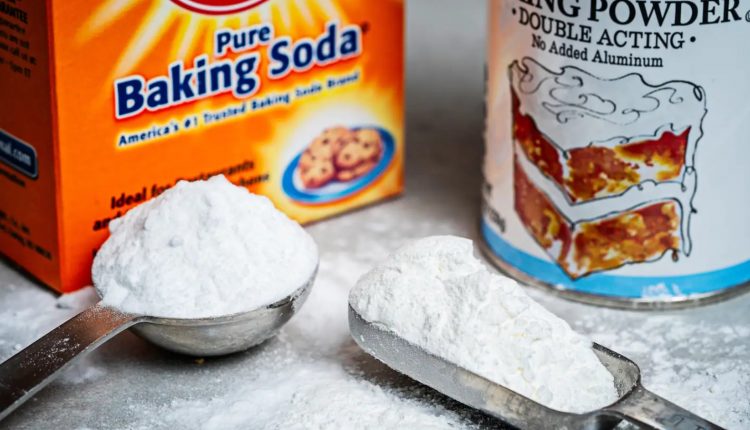©2021 Reporters Post24. All Rights Reserved.
The fact that they serve a similar purpose, and overlap in their composition, can be confusing. While both are used to generate rise in baked goods, they work in slightly different ways with different ingredients. Subbing one for the other, without accounting for those differences, can prove disastrous. Here’s what you need to know about these pantry staples.
Baking soda is pure sodium bicarbonate. It is alkaline, which means it has a pH above the neutral 7 and reacts with acidic ingredients. Think about the old baking soda-and-vinegar school experiment.
Baking powder is an all-in-one leavener, meaning it includes baking soda and the “exact amount of acid to use up all the soda,” Shirley Corriher says in “CookWise: The Hows and Whys of Successful Cooking.” Baking powder also includes a hefty amount of cornstarch, which helps absorb moisture to stave off premature reactions, as some of the acids in baking powder are activated in the presence of liquid.
How they work. Both leaveners work when they are broken down and release carbon dioxide. That gas is what contributes to the rise of baked goods. “Neither chemical leaveners nor steam create a single new bubble. They only enlarge bubbles that already exist in the dough,” Corriher says in “BakeWise: The Hows and Whys of Successful Baking.” That means that adding them to your dough or batter won’t automatically make them rise. You must still pay attention to the mixing method in a recipe, such as creaming butter and sugar, to create the air bubbles that the leaveners will inflate.
Baking soda will begin acting immediately in the presence of an acid, which means you need to act quickly with recipes that rely on it alone. While buttermilk, citrus and yogurt are obvious triggers, baking employs a variety of other acidic ingredients that you should be aware of, including honey, brown sugar, molasses and chocolate.
Most store-bought baking powder is double-acting and contains a blend of salt acids in which some react quickly, in the presence of liquid, and others more slowly, in the presence of heat, i.e., the oven. That generally buys you a bit more time, though you still shouldn’t wait too long to get those batters baking.
How much to use. Corriher says she finds many recipes are over-leavened. People seem to think that fallen cakes, for example, mean they need more leavening, but the opposite is true. “The bubbles get big, float to the top and pop. The baked goods get heavy and fall,” she says.
Another problem is taste, which can be an issue if there’s too much soda or insufficiently mixed baking powder, says Harold McGee in “On Food and Cooking.” The result? “A bitter, soapy, or ‘chemical’ flavor.”
A good rule of thumb, according to Corriher, is that 1 cup of flour can be leavened by ¼ teaspoon baking soda or 1 to 1¼ teaspoons of baking powder. Corriher says you can neutralize 1 cup mildly acidic ingredient (sour cream, buttermilk) with ½ teaspoon of soda. That same amount of soda will neutralize 1 teaspoon of lemon juice or 1¼ teaspoons of cream of tartar, McGee says.
Source: washingtonpost.com


